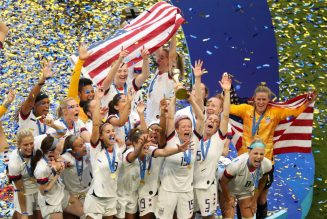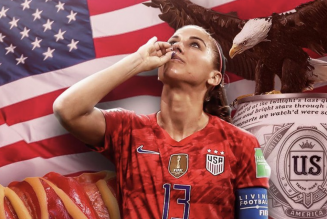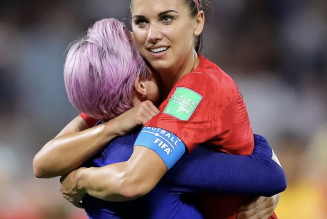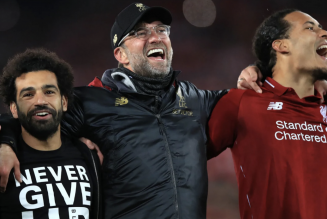The celebration of the Women’s World Cup soccer championship shifts this week from France to New York City. On Wednesday, the USWNT will be honored with a ticker tape parade and keys to the city, following its 2-0 win over the Netherlands in Sunday’s final in France.
But amid the celebration, the women now turn their focus back to a more serious matter. A gender discrimination lawsuit, filed before the tournament, demands pay equal to that of their male counterparts. And legions of USWNT supporters say a fourth Women’s World Cup title makes the case even stronger.
Equal pay
In the stadium near Lyon, France, on Sunday, it didn’t take long for the pivot.
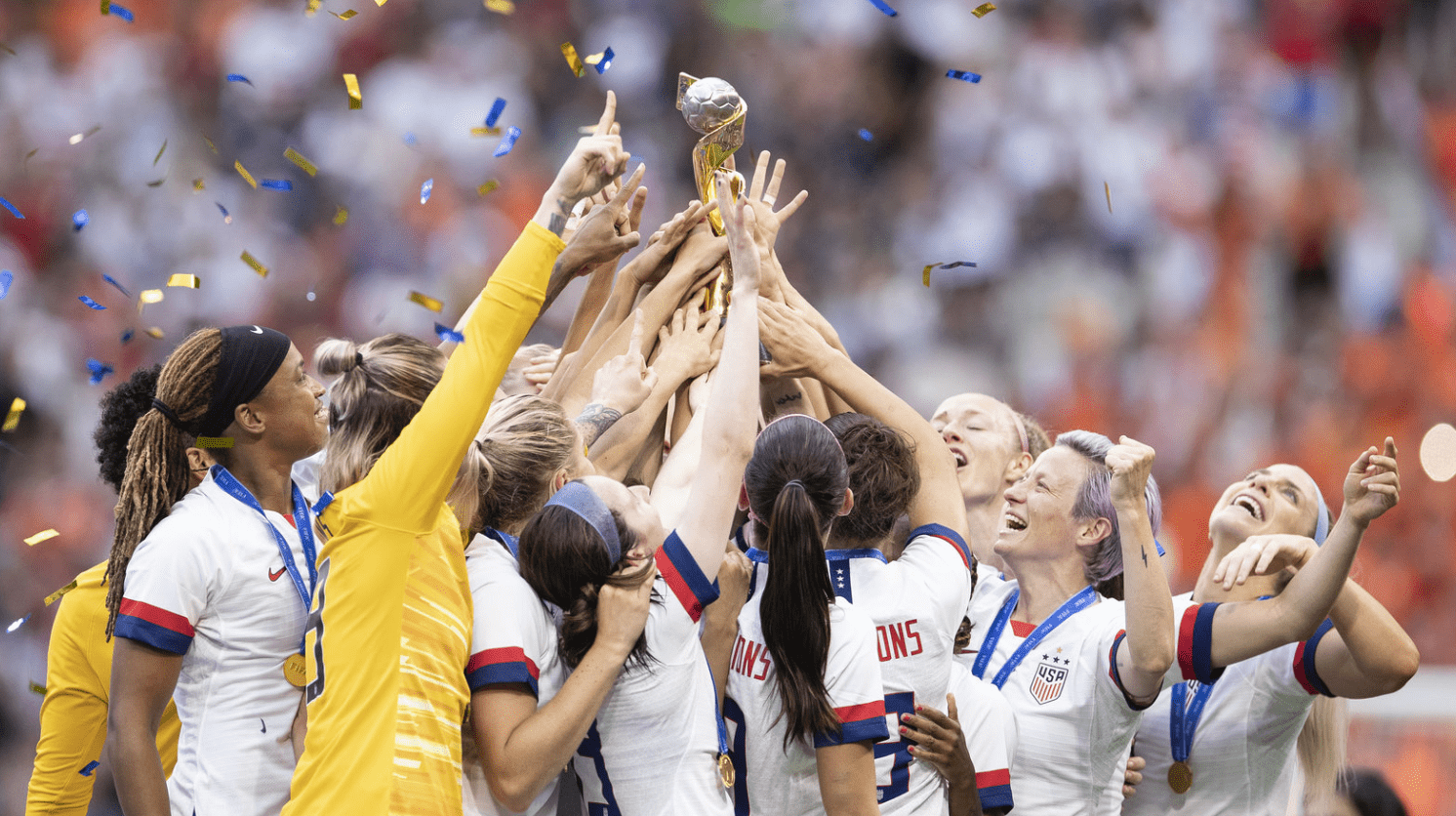
U.S. Women’s National Team players celebrate with the FIFA Women’s World Cup Trophy following team’s victory Sunday. Maja Hitij/Getty Images
From joy to indignation.
As U.S. players hugged and celebrated their hard-earned victory over a tough Dutch team, chants of «equal pay» bubbled up from the stands. There was booing too — for members of FIFA, soccer’s international governing body, which reportedly will pay the U.S. women a $4 million bonus, compared with the $38 million paid to last year’s World Cup winner.
From fans to players, the message was clear.
«To have our ladies represent and show that our soccer program is superior, it should inspire the United States to pay these women what they deserve to be paid,» said Kenneth Lloyd, from Austin, Texas. He watched the game in France with his son and daughter.
Megan Rapinoe, the outspoken U.S. winger, won the Golden Ball award, given to the tournament’s MVP. But after the match, she assumed her other role as outspoken plaintiff in the class action suit filed in March against U.S. Soccer, the sport’s governing body in the United States. The suit was brought by U.S. players, but Rapinoe says everyone at this Women’s World Cup helped push the fight forward.
«All players, I’m saying every player at this World Cup, put on the most incredible show that you could ever ask for,» Rapinoe said. «We can’t do anything more to impress, to be better ambassadors, to take on more, to play better, to do anything. It’s time to move that conversation forward to the next step.»
A tricky resolution
The next step is mediation, as the members of the USWNT and their federation try to resolve issues of equal pay and better working conditions.
On the surface, resolution seems easy.
Pay the USWNT what the USMNT make. Look at the women’s success versus the men’s lack thereof, amplified on Sunday. The women won their fourth Women’s World Cup title, while the men lost in the final of a regional tournament. In 2017, the men failed to qualify for the World Cup for the first time since 1986.
And look at what the teams earn for their federation.
The Wall Street Journal reports that from 2016 to 2018, USWNT’s games generated about $50.8 million in revenue, compared with $49.9 million for men’s games.
Also, the teams play different numbers of games, and that has an effect on revenue as well.
So with all these complexities and moving parts, is the popular perception that the USWNT are grossly underpaid compared with the men accurate?
According to an article in The Washington Post, the women are paid less sometimes. The biggest pay discrepancy does appear to be in World Cup bonuses, mentioned earlier.
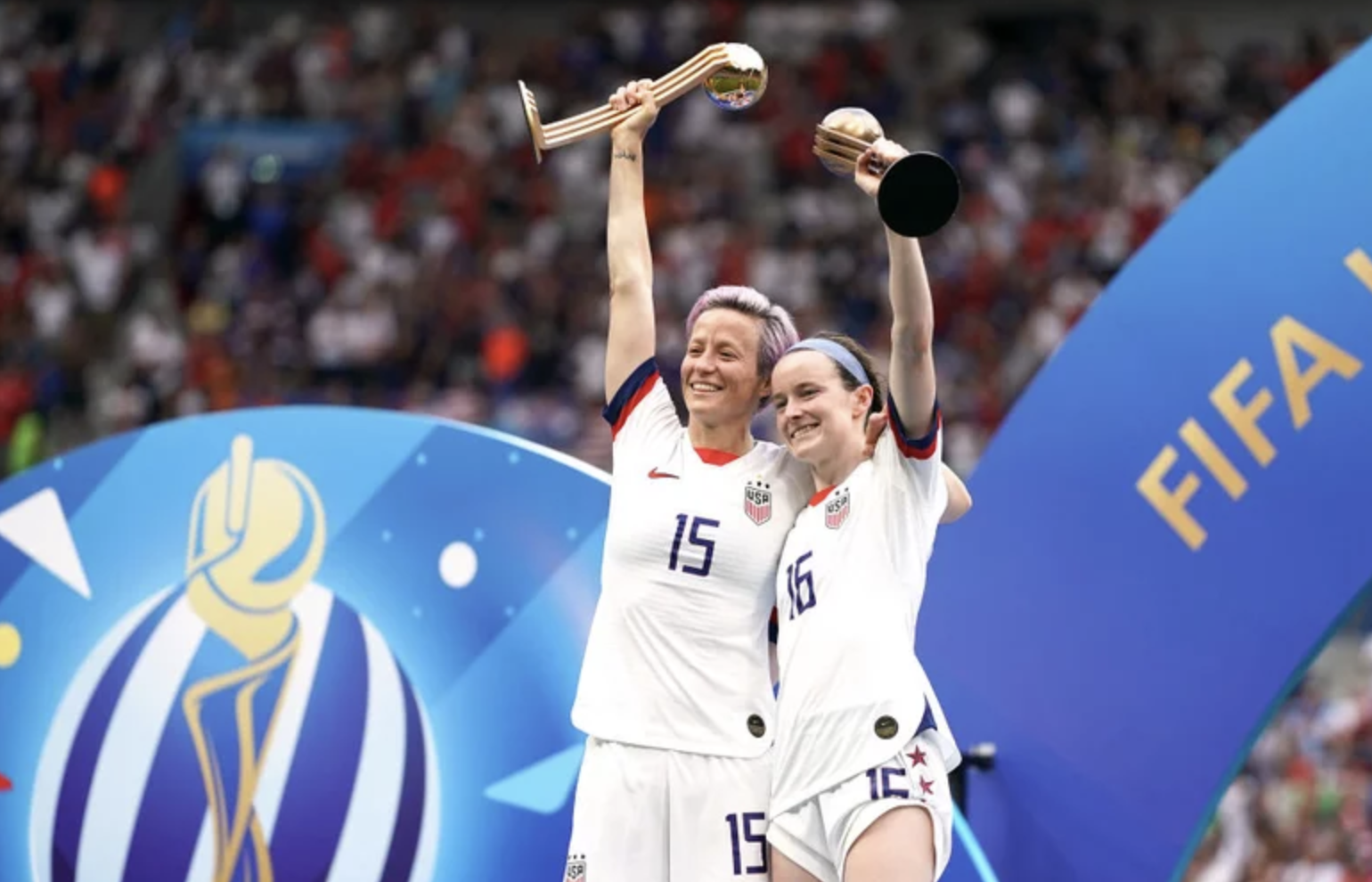
USA’s Megan Rapinoe (left) and Rose Lavelle celebrate with the FIFA Women’s World Cup Trophy after the final whistle USA v. Netherlands in Lyon, France, on July 7, 2019. John Walton—EMPICS/PA Images/Getty Image
Part of a larger story
Emily Martin is the vice president for education and workplace justice at the National Women’s Law Center and she sees the women’s fight as part of a broader, reinvigorated women’s movement of the past couple of years.
Martin says, «where so many women in the entertainment industry and beyond stood up and said, ‘We aren’t going to sit around in the face of inequality anymore. We’re demanding our due».

The USWNT at 2019 FIFA Women’s World Cup France group F match between USA and Thailand at Stade Auguste Delaune on June 11, 2019 in Reims, France. Marcio Machado—Getty Images
Even if the pay gap between the USWNT and USMNT might not be as glaring across-the-board as is often depicted, women everywhere in this country, whatever their jobs, should pay attention to the case. She says when you compare women and men who work full-time, year round, women are paid about 80 cents for every dollar paid to men.
Martin says considering the USWNT’s sustained excellence, pay equality may be aiming too low — and perhaps it’s time to ask for better pay.

